Departure Date: September 10 - 21, 2025
Compiled By: Max Breckenridge
Trip Leaders: Max Breckenridge
Toll Free: 800.328.8368
Phone: 512.328.5221
Western Australia 9/10/2025-9/21/2025

https://ebird.org/tripreport/410922
Our group for this inaugural trip was made up mostly of Australian birding veterans, some with several trips to the island continent under their belts. We united at the Pan Pacific Hotel in the clean and modern capital of Western Australia, Perth. We went on to enjoy a busy nine-day exploration of the southwestern corner of this enormous state. We had an excellent time and great success on the birding front, all despite the last bit of wintry weather raking the south coast with showers and cold winds. This tour focuses primarily on seeking out the West Australian endemic and near-endemics. We saw all but one of our targets (Western Fieldwren was heard only), including views of the “three skulkers,” which is quite exceptional. Along with excellent birds, we had great encounters with several enigmatic marsupials and sampled some of the wonderful food and drink on offer in this unique part of Australia.
Our first afternoon of birding was spent at Herdsman Lake, where we racked up a healthy list. A Wandering Whistling-Duck had lived up to its name and wandered way south of its normal range—it was pleasantly received, along with a pair of Pink-eared Ducks, plus a second pair with several ducklings. Roosting Tawny Frogmouth are always a treat to see, and we had close looks at numerous other local species including Black Swan (the WA state bird), Australasian Shoveler, Yellow-billed Spoonbill, Australian Hobby, Gray Fantail, Weebill, and Western Gerygone.
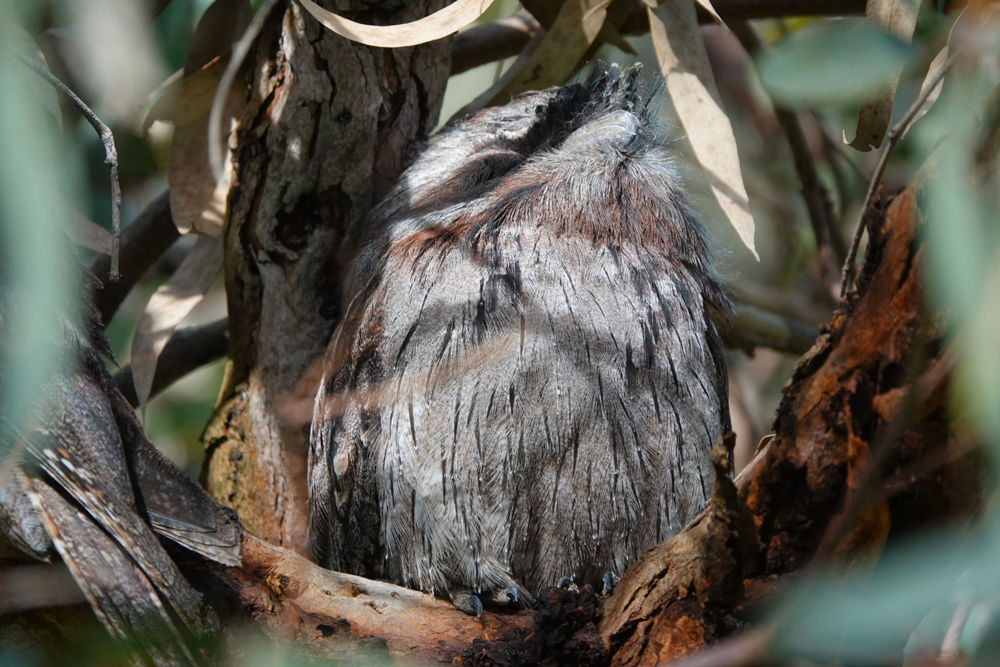
Tawny Frogmouth were roosting down low at Herdsman Lake in Perth (C) Max Breckenridge
We departed Perth for Narrogin the next morning, but not before enjoying a very birdy morning at Ellis Brook Valley Reserve, where the sandy coastal plain meets the forested hills on Perth’s eastern limit. Here, the desirable Red-eared Firetail was seen beautifully, among many other new species. Splashes of color were everywhere, with birds and wildflowers putting on a great display—male Splendid Fairywren and Red-capped Robins certainly drew gasps. On the road to Narrogin we struck gold, not far west of the Perth outskirts, when we stopped for a roadside party of black cockatoos. Much to my surprise, they turned out to be the scarce and endangered Baudin’s (Long-billed) Black-Cockatoo! We had extended views of a trio extracting the seeds out of the large gumnuts of the marri tree with their uniquely adapted long upper mandible. A flock of Red-tailed Black-Cockatoos back by the van were an added bonus to this fortuitous stop.
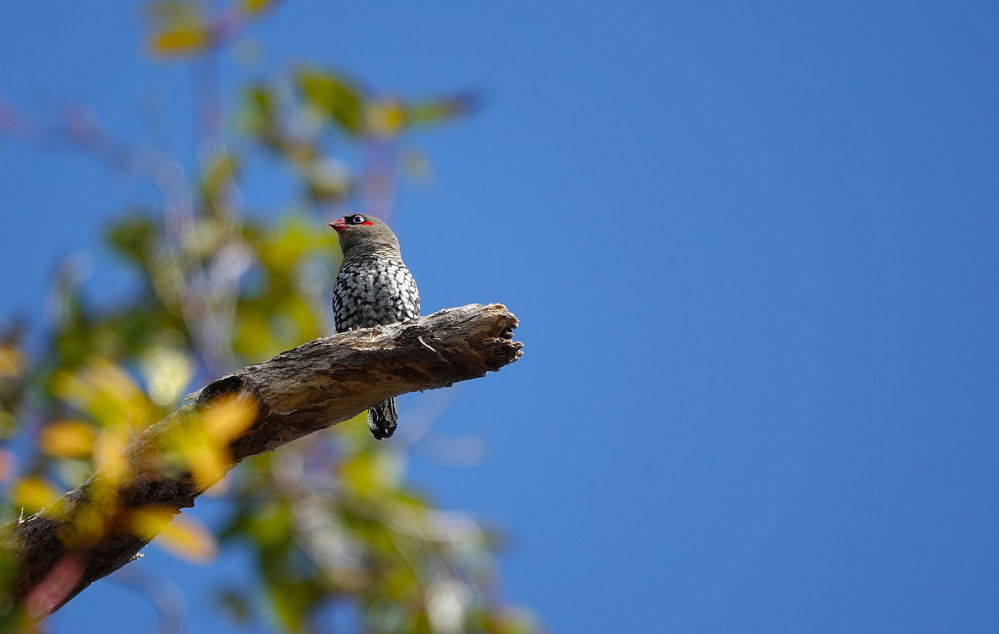
Red-eared Firetail showed well near Perth (C) Max Breckenridge
Our time in the wheatbelt town of Narrogin was spent primarily in the nearby Dryandra woodland. Despite blustery and occasionally wet conditions, we had a great time, with close looks at most of the specialties here. Highlights included a pair of the scarce Western Shrike-tit feeding low down, nesting Western Yellow Robins, Blue-breasted Fairywrens, Western Thornbill, Australian Ringnecks, several perched Regent Parrots, cute Purple-crowned Lorikeets (common), Dusky Woodswallow, piping Rufous Treecreepers, and a great Echidna sighting. Other mammals seen included a diurnal Yellow-footed Antechinus (a species of tiny carnivorous marsupial), mobs of Western Gray Kangaroos, a few quick Western Brush Wallabies, Common Brushtail Possum, and at least two Woylie during a spotlighting session.
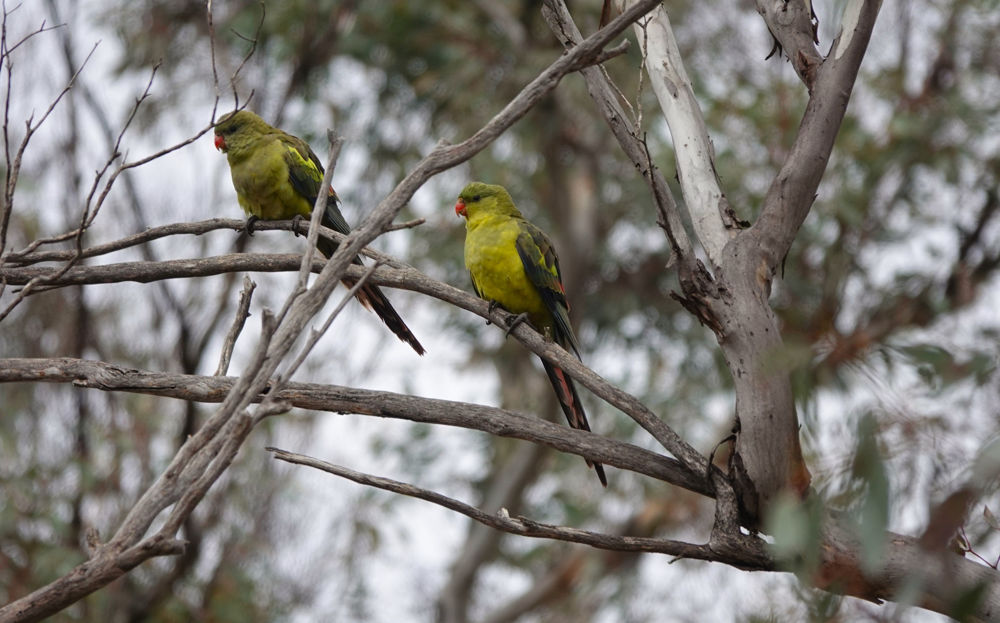
Regent Parrots were encountered in Dryandra (C) Max Breckenridge
Heading south from Narrogin, we went via Frankland River on our way to Albany, where Wayne spotted a very obliging Western Corella, which stole the attention away from some antique tractors. Localized flooding meant we didn’t do a great deal more birding en route to Albany, other than a quick stop for a slightly distant Blue-billed Duck where the heavens duly opened.
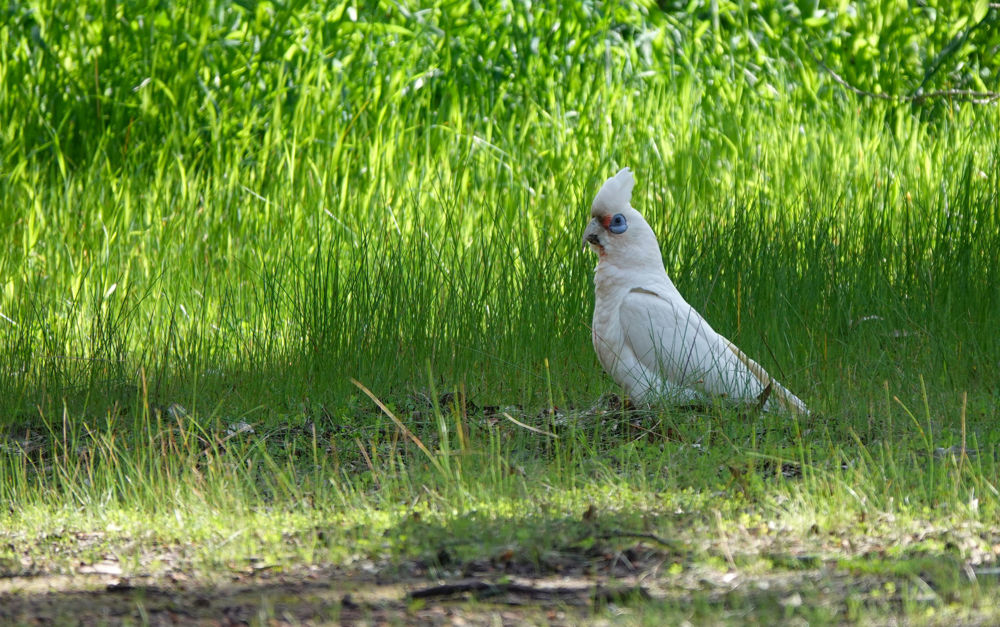
The distinctive Western Corella (C) Max Breckenridge
Once in Albany, we based ourselves out of a great hotel on the waterfront for the next four nights and enjoyed several great restaurants nearby. From here we made a number of excursions to the east, with Cheynes Beach being our primary focus for the first two mornings. Here amongst the stunning coastal heathland resides a selection of fantastic birds, including what are often referred to as “the three skulkers”—Western Bristlebird, Western Whipbird, and Noisy Scrub-bird. They are the bane of many good tour leaders, as they are frequently heard but seldom seen—particularly the Scrub-bird. Nevertheless, we toiled successfully and came away with better than average views of the scrub-bird with its ear-splitting song. Western Bristlebird performed much more obligingly, and the Western Whipbird was eventually tracked down near Corackerup Nature Reserve. Skulkers aside, we added a host of other specialties to our growing list while exploring the heathland. Brush Bronzewing, White-breasted Robin, Brown Quail, and the stunning Western Spinebill were around the caravan park itself, as were several vociferous Fan-tailed Cuckoos and Shining Bronze-Cuckoos. Western Wattlebirds and White-cheeked Honeyeaters dominated the patches of flowering banksia, and after several careful checks, we eventually located the infamous Honey Possum, which fed obligingly, almost at our feet! In the bay, a Southern Right Whale was observed, as were several striking Pacific Gulls and some Sooty Oystercatchers. We swapped Blue-breasted for Red-winged Fairywrens in the heathland and also encountered a pair of tiny Southern Emuwrens at close range. North of Cheynes Beach, we visited the distinctive stunted mallee habitat around Corackerup NR and Stirling Ranges NP. Memorable encounters included a confiding Southern Scrub-Robin, smart-looking Purple-gaped Honeyeaters, a darling Scarlet Robin, the scarce Square-tailed Kite, and a pair of Hooded Plovers along the edge of a saline lake.
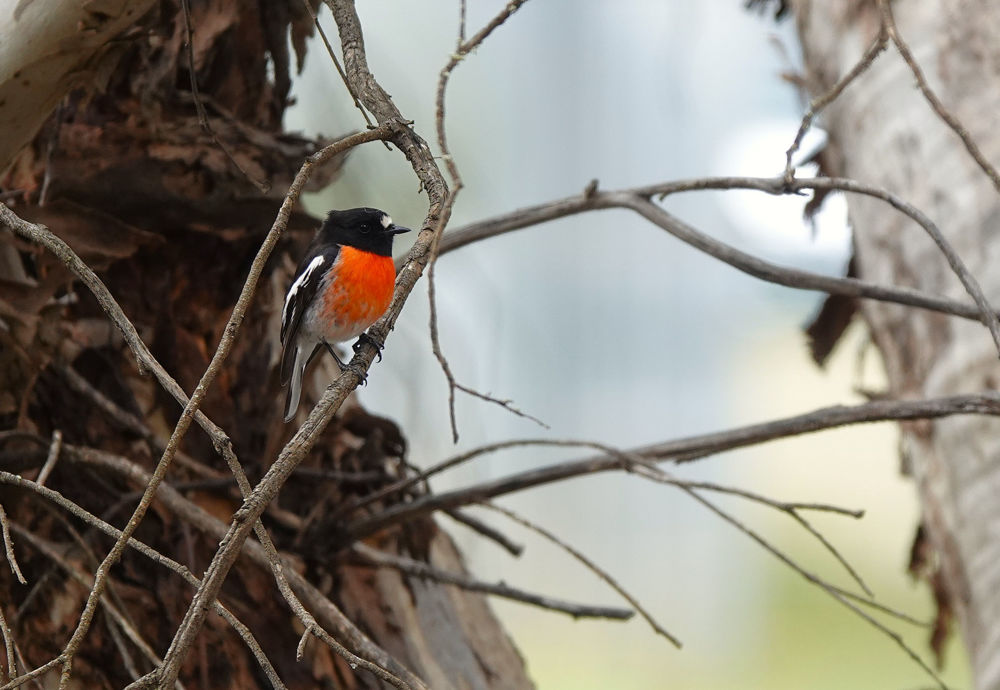
No words needed for this beauty - Scarlet Robin (C) Max Breckenridge
Before leaving Albany, we checked out a nearby wader roost and had good looks at Great Knot and several Fairy Terns. The evening before, we were able to find a pair of the threatened Western Ringtail Possum nearby. Heading west, we birded along the coast near Walpole and then at the impressive Gloucester Tree near Pemberton. Here amongst the towering karri trees were tens of Purple-crowned Lorikeets, White-breasted Robins, several families of Red-winged Fairywrens, and a pair of gorgeous Western Rosellas. An Emu beside the road was a nice way to cap off the day as we rolled into our beautiful lakeside lodge for the night.
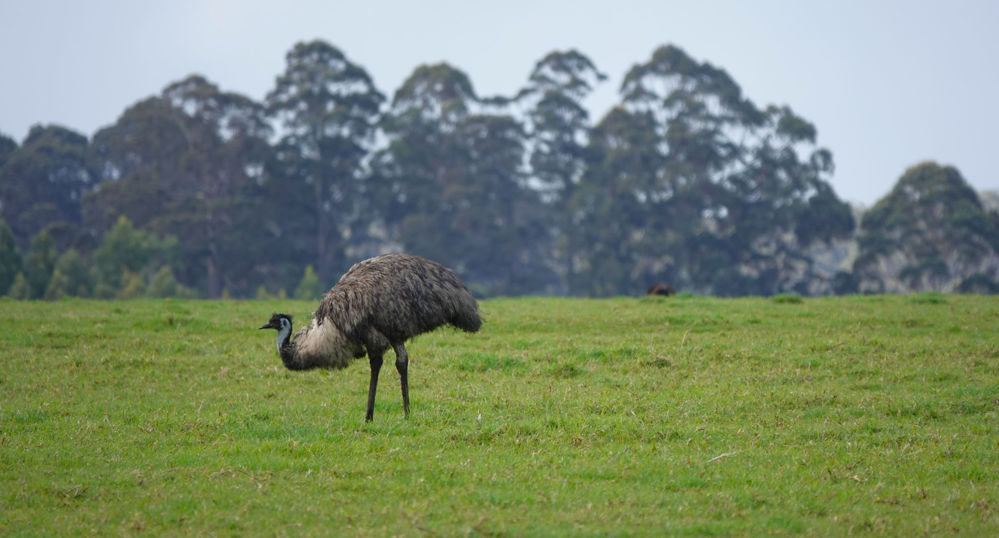
Emu in the paddock (C) Max Breckenridge
Our final full day was highlighted by a very successful morning visit to Cape Leeuwin, where an obliging little flock of Rock Parrots were well received. A flock of Baudin’s Black-Cockatoos beside the road were also a welcome sighting, after seeing mostly Carnaby’s Black-Cockatoos in the days prior. We made it back to Perth in the early afternoon and enjoyed one final morning at an excellent Peruvian restaurant in town. It had been a great tour in fantastic company, with everything running very smoothly in this wonderful part of a great country.
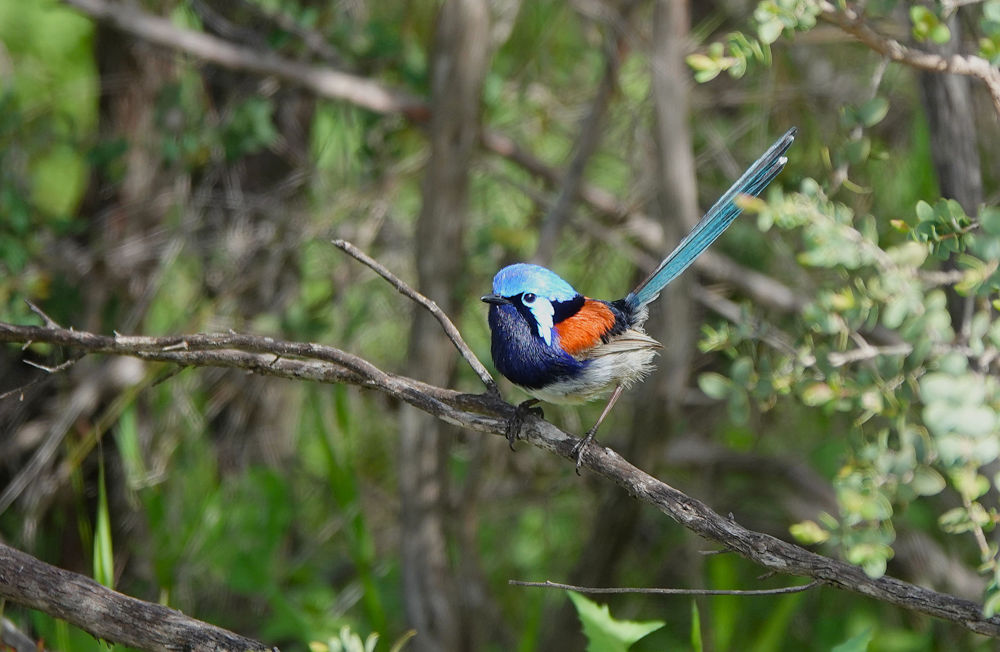
A stunning male Blue-breasted Fairywren (C) Max Breckenridge
A complete list of the birds recorded on our tour can be found at: https://ebird.org/tripreport/410922
Description for the next departure of this tour.
Max Breckenridge's upcoming tour schedule.
ITINERARY:
Day 1: September 12, 2025: (AM) Perth; (PM) Herdsman Lake
Day 2: September 13, 2025: (AM) Ellis Brook Valley Reserve, Wandering; (PM) Dryandra, Narrogin, Dryandra (spotlighting)
Day 3: September 14, 2025: (AM) Dryandra; (PM) Foxes Lair NR
Day 4: September 15, 2025: (AM) Dryandra, Kojonup; (PM) Frankland River, Nunijup Lake, Albany
Day 5: September 16, 2025: (AM) Cheynes Beach, Arpenteur NR; (PM) Cheynes Beach
Day 6: September 17, 2025: (AM) Cheynes Beach, Arpenteur NR; (PM) Cheynes Beach, Lake Seppings
Day 7: September 18, 2025: (AM) Boxwood Hill, Corackerup NR, Stirling Ranges NP; (PM) Bluff Knoll Cafe, Salt River Road
Day 8: September 19, 2025: (AM) Little Grove - Rushy Point, Torndirrup NP, Ocean Beach; (PM) Walpole, Pemberton - Gloucester Tree
Day 9: September 20, 2025: (AM) Cape Leeuwin; (PM) Capel, Perth
Day 10: September 21, 2025: (AM) Departures
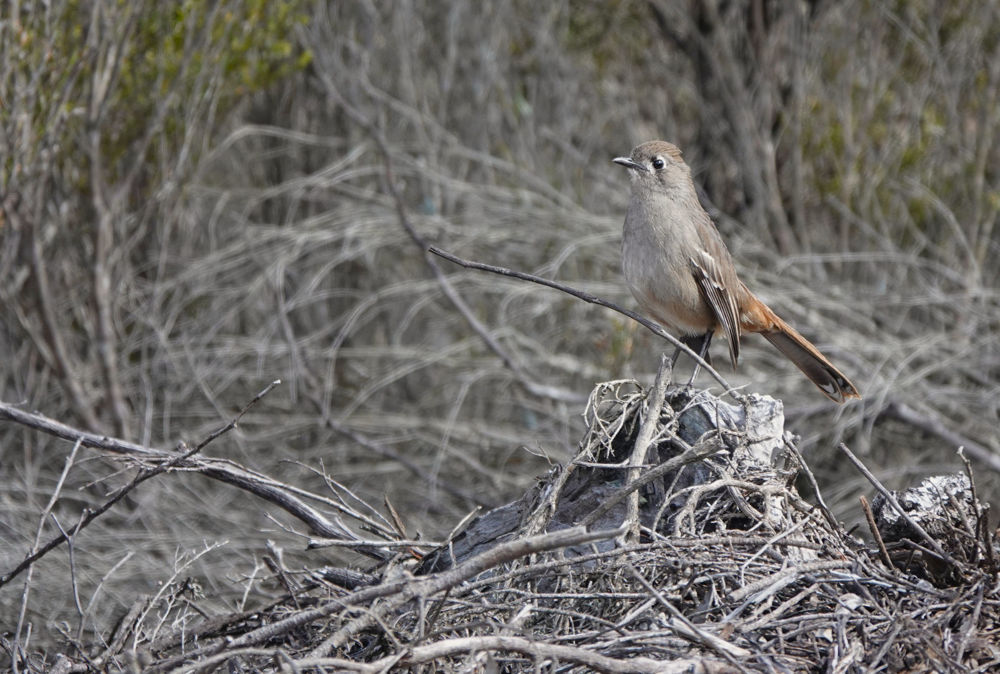
A curious Southern Scrub-Robin at Corackerup NR (C) Max Breckenridge
KEY:
NR - Nature Reserve
NP - National Park


